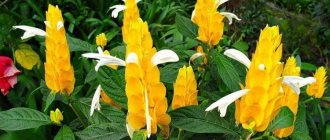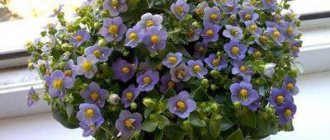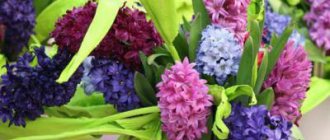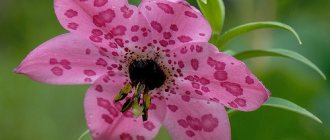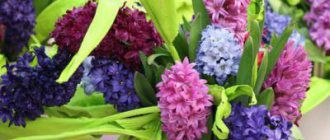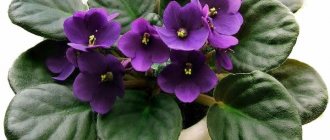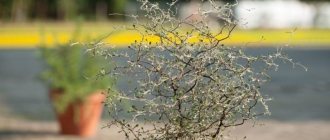Features of growing a subtropical plant
Like any other tropical or subtropical plant, bouvardia often gets sick at home if you do not take into account the peculiarities of cultivation.
This is a heat-loving evergreen perennial that needs a lot of sunlight. However, please note that direct sun can cause burns. This causes Bouvardia leaves to turn yellow and flower buds to dry out.
If you keep a perennial in such conditions for too long, then in order to protect itself, the plant will kill the entire above-ground part. When keeping Bouvardia in a southern window, there will be enough light for it, but it is better to protect it from the scorching sun with a protective screen or tulle.
Remember that in the wild the plant is found in the subtropics. Therefore, excessive heat and sunlight can be detrimental to it. The optimal temperature for keeping bouvardia is 20..25 ° C. It is best to choose a location on an east or west window. If the apartment's windows face north, then additional lighting with special lamps will be required. In winter, provide the plant with a period of rest. It is optimal to keep it at a temperature of 10-12°C with a reduction in the number of water procedures and cessation of fertilizing. A period of rest is necessary for the plant to lay new flower buds.
In winter, watering is reduced, but not stopped completely. Since the plant stops growing, it uses less nutrients and moisture. Dry earthen lump is a common cause of death of flowers. At any time of the year, melt moisture at room temperature is used for irrigation. In summer, it is best to use rainwater. If you live in a big city, then use bottled moisture or let it sit for 3-4 days.
To maintain high humidity (at least 60%), install an automatic humidifier next to the bouvardia. She feels great next to small indoor fountains or containers of water. High humidity is necessary for active flowering. Without it, the perennial may not bloom at all and the green part of the bouvardia - the stems and leaves - dries out.
Some gardeners who grow plants for cutting and creating bouquets plant Bouvardia as a biennial. In this case, periodic replanting is not required. The fact is that it is in the second year of life that the plant blooms very profusely. Spectacular flowering may not occur again. Those who grow Bouvardia as a home perennial transplant it into a new pot only when necessary. It occurs when the old container has become cramped - usually no more than once every 2 years. The same soil is used for replanting. It can be purchased at a flower shop or made independently using peat, sand and turf. If you buy soil, then choose universal compositions for indoor flowering plants. Plants are replanted by transshipment or combining the procedure with vegetative propagation.
Periodically during the growing season you need to feed bouvardia with mineral complexes. At the beginning of spring, as soon as flower buds begin to form, important elements are nitrogen (in small quantities) and potassium. Closer to autumn and hibernation, try not to apply nitrogen fertilizers, focusing on phosphorus. When feeding with complex formulations for flowering indoor plants, frequency is allowed - no more than once every 14 days. Organics are not recommended.
Zamioculcas
Tropical African plant from the Araceae family.
The plant is designed to survive in hot, sultry conditions. Its trunk, a tuber, is located in the ground and has the ability to accumulate water. Leaves of unusual shape, resembling sticks, grow directly from the trunk (from the ground). They are covered with a waxy coating, which gives them a glossy appearance and protects the plant from moisture loss.
An unusual flower in the form of a corn cob, wrapped in a petal-veil, also blooms from the base of the trunk.
Goldenrod (golden rod)
Other names: solidago canadiana, life-giving herb, scrofula, centaury herb, spool, sevensilnik
List of all plants starting with the letter z (full catalog of names)
Application
Goldenrod is used for stomach pain, diarrhea, liver diseases, jaundice, kidney and gallstones, edema, gout, rheumatism, inflammatory processes in the urinary system, urinary incontinence, tuberculosis and asthma. The leaves of the plant are used externally for purulent wounds, boils and ulcers. With a decoction of the herbs, rinses are used for sore throat, gingivitis, and stomatitis.
Contraindications
Goldenrod should not be used by pregnant and lactating women, people suffering from glomerulonephritis, kidney failure, or those with an individual intolerance to this plant.
During treatment, it is important to strictly follow the dosage
goldenrod
A diverse species of perennials from the Asteraceae or Compositae family. Widely distributed in Russia in the Caucasus, Western and Eastern Siberia, and the Far East.
Varieties found in home cultivation include:
- Common goldenrod;
- Dahurian goldenrod;
- Canadian goldenrod;
The herbaceous plant has erect stems, bare or covered with villi. The leaf blades are arranged oppositely and can be solid or with jagged edges.
Inflorescences are corymbose, paniculate, racemose. They consist of baskets from which emerge pistillate flowers with a yellow corolla. Flowering occurs at the end of summer, and then the fruits - achenes - ripen.
Goldenrods are medicinal plants and excellent honey plants.
Green tea
Other names: Camellia sinensis
Application
Green tea has a tonic and strengthening effect on the body, removes toxins, inhibits the growth of tumors, and exhibits diuretic properties. A drink made from it is effective for fever, alcohol intoxication, hypoacid gastritis, decreased appetite, atherosclerosis, and hypertension. Green tea infusion has an antibacterial effect against bacteria that cause dysentery. It is used for inflammatory diseases of the gums and teeth.
Contraindications
Green tea is contraindicated for hyperacid gastritis, peptic ulcers, gout
Women should take it with caution during pregnancy and lactation.
Strawberries
Plakun herb medicinal properties
Other names: wild strawberry, common strawberry, drifting snow, berryberry, wild strawberry
Application
Strawberry leaves, berries and roots are used for colds, gout, diseases of the joints, liver, atherosclerosis, and heavy menstruation. Juice and berries are consumed for vitamin deficiency, anemia, metabolic disorders, gastritis, colitis, ulcers, atonic constipation, kidney stones and gall bladder, inflammatory processes in the genitourinary system, hypertension. A decoction of strawberry leaves and roots helps strengthen gums and teeth, heal wounds and ulcers on the skin.
Contraindications
Contraindications for the use of strawberry products are allergies, individual intolerance, and increased secretion of gastric juice. It is also not recommended for pregnant women to use them.
Variety of wild and meadow flowers
If you happen to admire a flowering field, then this magical sight will be remembered forever. The sea, swaying from the slightest breeze, emitting a stupefying aroma, instills peace and tranquility even in pragmatic people.
Wildflowers come in a very wide variety of unique colors. By the way, cornflower has a shade that is not found anywhere else in nature.
To date, scientists have described slightly less than 300 thousand species of wildflowers out of the existing 500,000. By the way, many of them are famous for their healing properties and therefore have been used in folk medicine since ancient times. The most useful are the following:
- cornflower;
- chamomile;
- dog violet;
- bell.
In recent years, in many regions of the country, summer residents are increasingly growing wildflowers on their plots. Most of their varieties are used as a background when decorating flower beds or creating borders.
These include, in particular:
- poppies;
- chamomile;
- bells.
Experts were also able to cultivate cornflower. Moreover, in addition to the unique shade, varieties with a different color also appeared:
- white;
- pink;
- purple, etc.
Below we will describe the most attractive representatives of wild flowers that decorate Russian spaces everywhere. © 2022, Copyright reserved! A link when copying is required! | Source: flowers-republic.ru
centaury
Other names: centaury umbrella, common or small, spool grass, dawn, centaur grass, century
Application
Centaury-based products stimulate appetite and improve digestion. They are effective for increased acidity of gastric juice, colitis, liver and gall bladder diseases, anemia and weakening of the body, helminthic infestations, dysentery, and urinary incontinence. The plant has a mild laxative effect, helps with constipation, flatulence, heartburn, and vomiting.
Contraindications
Centaury is not recommended for use by people suffering from peptic ulcers and sensitive to bitterness. Contraindications are individual intolerance, obesity, pregnancy.
Yellow grasses of natural landscapes
Buttercup
Many people call this flower the “rose of the fields.” Indeed, a certain similarity is noticeable to the naked eye. However, unlike the “queen of the garden,” the buttercup does not have thorns.
The flower is particularly charming, largely due to its great toxicity. Its juice is a powerful poison that the indigenous peoples of Siberia have used since ancient times to lubricate arrows.
Many people do not believe that irises are wildflowers. Nevertheless, it is so. This plant is different:
- gracefulness;
- elegance;
- non-capriciousness.
The plant goes well with many other wildflowers and lasts a long time in a vase. It is known that a bouquet of irises is the best gift for an extraordinary person. © 2022, Copyright reserved! A link when copying is required! | Source: flowers-republic.ru
This is a poisonous flower, but when consumed in small quantities it has medicinal effects:
- relieves pain in joints;
- helps open boils and carbuncles;
- relieves stomach cramps;
- eliminates migraine;
- stimulates the central nervous system;
- increases hemoglobin;
- treats skin tuberculosis;
- kills bacteria and fungi.
St. John's wort
St. John's wort blooms from June to August. The leafy tops of the medicinal plant, together with the inflorescences, are used to relieve pain and as an antiseptic and diuretic. Most often, the flower can be found in open glades, forest edges, and meadows.
Effective for treating:
- colds and coughs;
- urolithiasis and cystitis;
- CVS pathologies;
- inflammation in the oral cavity;
- nerves, depression, stress;
- hematomas and bruises;
- burns.
Goose onion
Yellowflower appears immediately after the snow melts. The plant reaches a height of 15 cm, the flower has 6 yellowish-greenish petals. The fruit of the goose onion is formed at the end of May in the form of a small round box.
Recommended for spring vitamin deficiencies. Helps with epilepsy, bronchial asthma, hepatitis. Has wound-healing and antiseptic effects.
Dandelion
Yellow buds can be found in almost every corner of Russia. Dandelion is considered the most common meadow flower in the world. It cannot boast of any richness of aroma or special grace. However, the culture is considered edible, which is why many cuisines include dandelion dishes. © 2022, Copyright reserved! A link when copying is required! | Source: flowers-republic.ru
Dandelion:
- eliminates pain and swelling from a bee sting;
- helps with colds;
- heals skin damage;
- relieves anemia;
- softens the symptoms of tuberculosis;
- eliminates cholesterol plaques;
- treats eczema;
- improves the functioning of the digestive organs, promotes the production of gastric juice, improves appetite;
- removes acne and papillomas;
- whitens the skin, hides pigmentation and freckles.
Sweet clover
Sweet clover is also a yellow wildflower. This is one of the tallest flowers, growing above human height (up to 2 m). The stems are evenly covered with three-fingered leaves. Small flowers (yellow or white) are arranged in racemes.
Sweet clover heals wounds, relieves inflammation and cramps, and treats wet cough.
St. John's wort
Other names: St. John's wort, hare's blood, St. John's wort, St. John's wort, bloodwort, twigwort
Application
St. John's wort preparations are taken orally for diseases of the gastrointestinal tract, liver, bile ducts, respiratory tract, urinary system, headaches, insomnia, and urinary incontinence. The plant is also used for uterine bleeding. Externally, infusions and decoctions of the herb are used to treat wounds, ulcers and burns, for rinsing with sore throat, stomatitis and gingivitis, and for rinsing the nose with a runny nose.
Stinging nettle in the photo
Contraindications
Contraindications for treatment with St. John's wort are individual intolerance and hypertension. Taking it increases the body's sensitivity to sunlight, which can cause burns and dermatitis after exposure to the sun.
centaury
Other names: centaury umbrella, common or small, spool grass, dawn, centaur grass, century
Application
Centaury-based products stimulate appetite and improve digestion. They are effective for increased acidity of gastric juice, colitis, liver and gall bladder diseases, anemia and weakening of the body, helminthic infestations, dysentery, and urinary incontinence. The plant has a mild laxative effect, helps with constipation, flatulence, heartburn, and vomiting.
Contraindications
Centaury is not recommended for use by people suffering from peptic ulcers and sensitive to bitterness. Contraindications are individual intolerance, obesity, pregnancy.
Wild (meadow) flowers: 34 types with photos, names and applications
Why are they called that?
Often the name of wildflowers speaks about the noticeable characteristics of the plants. Coltsfoot is so named because of its leaves - warm, terry on one side, smooth and cold on the other. The flowers of the cranebird resemble the beak of this slender bird, and the flowers of the bluebell resemble a bell. Oregano has a unique aroma, especially when dried. The tea made from it is very fragrant. Elecampane acquired its nickname because it helps well with weakness and fatigue: it gives a person “nine strength.” It also happens that the name of wildflowers is associated with myths and legends. They say that cornflower is named after St. Basil the Great, who had a special affinity for flowers, and is a symbol of kindness and spiritual purity. The flowers on the stems of Ivan da Marya received their name thanks to the legend of unhappy love. The girl and the guy, having learned that they were brother and sister to each other, so as not to be separated, turned into flowers of different shades. The sleep-grass flower is so called because at night the petals close tightly and the plant droops, as if falling asleep. Another name for this flower is lumbago. According to legend, an angel fired an arrow at a demon hiding in the thickets of this plant and shot through the leaves.
The most popular meadow plants
In total, there are about 1 thousand species of meadow grasses.
The most common plants in Russia are:
1.Dandelion. Belongs to the Asteraceae family. It stands out against the background of grass with bright yellow inflorescences.
The fruits are achenes that can be scattered over long distances when blown away by the wind.
Dandelion is widespread in different parts of the planet, except tropical areas. Flowering occurs between April and June. The beginning of the process depends on climatic conditions. Achenes appear from late April to June. Dandelion is used in folk medicine.
2. Buttercup is caustic. Popularly called “night blindness”. Despite the attractive yellow flowers, they are best admired from a distance. The plant is a poisonous herb and has a pungent odor. It belongs to the Buttercup family. Flowering begins in June-July, later the nutty fruit appears.
3.Aconite (wrestler). Another representative of the Buttercups, which is poisonous. Found in Europe, Asia, North America. The inflorescences are arranged in the form of a brush. Sometimes a pyramidal shape can be seen. Most often, the flowers come in blue and purple shades, but there are also white and yellow colors. Due to its strong toxic effect, the plant is not used anywhere. In total there are about 300 species of aconite.
4. Cornflower. Belongs to the Asteraceae family. It is a cold-resistant plant.
If you want to plant it on your site, you need to choose an area not in the shade, but with access to sunlight.
The inflorescences of the plant are lilac-pink. The fruit is an achene. Cornflower blooms throughout the summer. Due to its choleretic and anti-inflammatory properties it is used in folk medicine.
5.Bell. Inflorescences are most often in the form of a brush or panicle of a blue or purple hue. There are white specimens. The plant blooms until mid-summer, sometimes this period extends until September. Then a fruit is formed - a box with seeds. Owners of summer cottages love to decorate their territory with bells because of the graceful shape of the flower and rich colors.
The most famous medicinal meadow herbs.
Many meadow plants are used in medicine. The most famous of them are:
- Chamomile. Belongs to the Asteraceae family. There are about 20 species of these herbs. In addition to Eurasia, chamomile, considered a symbol of Russia, is found in America and South Africa. The plant has a corymbose inflorescence. The fruit is an achene. Chamomile is often used in medicine and cosmetology.
- St. John's wort. It mainly grows in the Northern Hemisphere and Mediterranean regions. Belongs to the St. John's wort family. Semi-umbrella, racemose inflorescences have yellow shades. Flowering begins in May or June. The grass has a negative effect on animals, causing pathological reactions. In medicine, St. John's wort is considered an anti-anxiety agent with a number of side effects.
- Oregano (Oregano). Belongs to the Lamiaceae family. Found in European countries and the Mediterranean. Flowering occurs in June-July. Oregano is used in medicine as an anti-inflammatory and anti-spasm agent. The flowers have lilac-pink shades.
- Red clover. Belongs to the legume family. Many people believe that clover grows primarily in Europe. But it is also widespread in North Africa, Western and Central Asia. Clover has spherical inflorescences of a red hue, sometimes white. The fruit is a bean. The flowering period is from June to September. The leaves are used to prepare medicines. Some housewives add them to salads and cabbage soup. In this case, there is no need to collect clover near roads where it is often found. It is also valued as fodder grass.
When taken, meadow plants can cause allergic reactions and side effects.
Consultation with a specialist is recommended.
Goose onion
A low-growing plant no higher than 15 cm, it has long leaves growing at the roots, small bright yellow flowers that smell distinctly of honey. Used as a cosmetic and medicinal product.
Elecampane
It grows in bushes up to 1 m high. The leaves are narrow, light green, the inflorescences are orange or yellow. Flowers are single or in bunches. Used for face and body care, as well as in folk medicine.
Sweet clover
Sweet clover is also a yellow wildflower. This is one of the tallest flowers, growing above human height (up to 2 m). The stems are evenly covered with three-fingered leaves. Small flowers (yellow or white) are arranged in racemes.
Sweet clover heals wounds, relieves inflammation and cramps, and treats wet cough.
Delphinium
This bush plant is even taller - up to 1.5 m. The area at the roots is equipped with narrow lancet leaves.
The flowers are small, come in different colors, including yellow, and are arranged pyramidally on a long stem. Delphinium is added as a beneficial component in soap production. Field plants with yellow inflorescences can continue the above list. These include: zopnik (or fever root), St. John's wort, tansy, spring Adonis, buttercup, sow thistle, goldenrod, rapeseed, mullein, goldenrod, celandine, swimsuit and many others.
Buttercup
This particular flower is called the “rose of the fields,” but in fact, it seems that only thorns are missing.
Beautiful and dangerous, this is how this wildflower can be described. Behind the sunny brightness of the delicate petals lies a hidden threat. Buttercup sap is very poisonous, so be careful when picking this flower.
Chicory
It has a powerful, fleshy root filled with milky juice. The stem with multiple branches grows up to 120 cm in height. The leaves grow from the middle part of the stems and are collected in rosettes. The flowers of this meadow plant are blue-blue (there are white and pink varieties), with jagged petals, bordered by leaves, located along the length of the stems and at their tops. Loves the sun, flowers close in the afternoon.
Chicory is good for the nervous system, heart and blood vessels, kidneys and liver. It is a healing food for animals.
Aquilegia vulgaris
Bush meadow flowers of medium height (up to 80 cm). They are not afraid of frost. Large inflorescences on tall thin stalks can be of a wide variety of colors: blue, white, red, pink, purple, black, lilac. Aquilegia treats pneumonia, sore throat, skin diseases, wounds and burns, scurvy, headaches and stomach pains.
Timothy grass
Timothy grass, otherwise known as arzhan or stick insect, is widespread, it can be found even in Africa. This is a cereal plant that has more than 30 varieties. There are 4 types of timothy growing in our country.
This is a plant with a thin stem, up to 0.5-0.8 meters high, with thin drooping leaves and an inflorescence panicle in the form of a cylindrical spike.
Does not tolerate drought and excessive waterlogging . It is grown as a fodder crop for livestock, has a high protein content, and is mowed 2-3 times per season. Not suitable for sports lawns and pastures as it grows slowly.
The plant is used in Tibetan medicine to relieve cramps and muscle strain. Pollen can cause allergies.
Blue cornflower
Cornflower (hair) is a common plant in meadows and grain fields. About 500 species of this plant are known with a wide variety of flower colors, but only blue ones are considered medicinal.
One of the main medicinal properties of cornflower is the normalization of kidney function, slowing down aging and preventing Alzheimer's disease. The plant is also used to treat “night blindness” (impaired twilight vision).
Cornflower has an unobtrusive smell and is a good honey plant.
Cornflower honey has an unusual taste with a slight bitterness. The plant grows up to a meter in height, bushes well, flower baskets can be up to 3-5 cm in diameter. Cornflower is sometimes confused with a malicious weed called thistle.
Cornflower is a poisonous plant; it contains the substance cyanogen, so the use of infusions and preparations should be under the supervision of a doctor.
Blooming Sally
Ivan tea has been known to our ancestors for a long time; it was called differently: fireweed, boron potion, sage, magpie eyes, cockerel apples.
It blooms its lilac flowers early in the morning, before 7 o’clock, and each inflorescence cup contains up to 30 mg of nectar; up to 650 kg of honey is collected per hectare.
When the plant blooms, fluff is formed, which was used to stuff pillows in the old days. The height of the plant reaches 2 meters, the inflorescences are located on the upper part of the plant.
The seeds are dispersed by the wind and remain viable for several years. Leaves, flowers, roots, even pods are included as components in medicines.
St. John's wort
The plant got its name due to the fact that when animals, especially horses, eat it, they experience deterioration in health. The plant is popularly called “rabbit’s blood” or “red herb.” This is due to the fact that the stem of St. John's wort acquires a purple hue as it grows, and the juice of the plucked flower becomes bloody in color.
St. John's wort is a low plant, up to 0.3-0.6 meters in height, with flowers of light ocher color. It’s amazing that butterflies, midges, dragonflies, and bees always hover over St. John’s wort. although there is no nectar in the flower.
Until now, in villages, St. John's wort is considered a magical plant and, in dried form, is placed under the threshold or hung from the ceiling to protect against the evil eye or damage.
The plant is credited with many healing properties; it is not for nothing that it is also called “healing plant”. It is believed that St. John's wort is the herb of the sun, the energy of which it accumulates and transmits to people. There are many indications for the use of the herb, but it must be used very carefully for a long time.
Bonfireless meadow bonfire
The plant occupies large spaces in meadows, forming thickets up to 1.5 meters high. The stem is thin, the leaves are narrow, stems with spikelets-inflorescences at the end extend from the main stem, because of this the plant looks like oats. When the wind blows, the inflorescences glow reddish, which explains its name. Doesn't get along well with legumes. It is used as a fodder crop and for making dry bouquets. Not even used in folk medicine.
Clover red
Clover is one of the most common meadow plants; there are about 300 varieties of it, most of which grow in meadows. People simply call it “porridge”. The stem of clover is branched, rises above the ground to a height of no more than half a meter, the leaves are three-leafed, but there are specimens with 4 and 5 petals of the leaf blade. They have the amazing property of closing in the evening before sunset, which is usually only characteristic of flower petals. The inflorescence is small, round, fluffy, rich in nectar, but only bumblebees can reach it, since bees have a short proboscis. Used as a fodder plant, it can be used in cooking for preparing salads.
Valerian
It is a herbaceous perennial, reaching a height of one and a half meters. Its leaves change shape depending on the year of life, for example, in the first year they are petiolate, and in the second they are lanceolate. Valerian has small meadow flowers that can be white or pink. In the first year the plant does not bloom. The tart aroma of valerian literally makes cats tremble. It grows in the United States, Europe and Russia.
Let's rock
This plant is also a meadow plant, but more often it can be found in the steppes, where there is drought and little moisture. In common parlance it is called “tumbleweed.” Kachim has the appearance of a strongly branching bush, which breaks off in the wind and, having fallen off, begins to roll around the surrounding area.
Dandelion
This is a fairly common flower, which, due to its unpretentiousness and rapid dispersal, is considered a weed by many farmers. It has a high germination rate and is able to sprout even through cracks. In cloudy weather or rain, the plant closes its buds and waits for the bright sun. A little-known fact is that the milky sap of the plant relieves pain and swelling from a bee sting. It is a honey plant that disperses easily with white umbrella seeds.
Wild onion
Many edible plants are consumed very rarely, but not wild onions. It is very common in cooking, and some people use it along with regular green onions. If you come across it on the way, then you can eat it with peace of mind.
The perennial grass often grows in pastures, fields and forests. It can be distinguished by its long bare stem, arrow-shaped leaves and a spherical basket of white and lilac flowers.
All green parts of the plant can be eaten fresh or dried. To use it raw, no additional processing is required; just rinse it thoroughly. Onions are dried in the open air or in an oven, then chopped and used as a seasoning.
Names of blue wildflowers. Blue linen
Among the flowers that delight us with a cool, heavenly hue, flax can be called the most delicate. Its Latin name - Línum - comes from the Celtic language, in which the word lin means “thread”: the flax stalk consists entirely of thin fibers. Since ancient times, the plant has healed, fed and clothed people. The remarkable quality of flax material is its resistance to rotting and increased strength at high humidity. From the seed of this plant of the flax family, oil was made, which generously contains the essential linolenic fatty acid, which is involved in the metabolism of humans and animals and prevents the development of cardiovascular diseases.
Aquilegia ordinary
Bush plant up to 80 centimeters tall. The leaves are bluish-green, thrice dissected. The flowers are blue or dark purple (can be pink, white, red, purple, blue-black) up to 5 centimeters in diameter. Flowers on tall thin shoots. Winter-hardy plant. Withstands the harsh climate of the Urals.
Djungarian aconite
Bush perennial plant up to 2 meters tall. The leaves are round, five-dissected, dark green in color. The flowers are dark purple, large, five-leaved, corolla-shaped, up to 8 cm in diameter. There are many flowers on the shoots. Frost-resistant plant. Used in alternative medicine.
Chamomile
An annual herbaceous plant. Widely distributed in Eurasia and North America. At the end of the shoots there are single baskets. The inflorescence consists of snow-white reed and middle tubular lemon petals. Blooms from May to August.
Essential oil is extracted from chamomile. Its most valuable component is chamazulene. Has anti-inflammatory, sedative, local anesthetic effects.
The extract is added to soaps, creams, and shampoos.
Goose onion
Low-growing, no more than 15 cm. Leaves are elongated, growing at the base. The flowers are bright yellow and smell of honey. They bloom from April to early June.
Recommended for spring vitamin deficiencies. Helps with epilepsy, bronchial asthma, hepatitis. Has wound-healing and antiseptic effects.
Comfrey Medicinal
Up to 0.9 m, with a hard, rough above-ground part. The flowers are violet in color with a purple tint. Flowering occurs from late May to September.
Used for:
- relief of inflammation;
- stopping hemorrhage;
- therapy of tumors and ulcerative lesions;
- alleviating symptoms of fractures and dislocations;
- preventing decay.
Dianthus grass
In field and meadow carnations, the corollas of flowers consist of white or pink petals. In cultivated ones - often cream, salmon, yellow, red, purple.
Meadow geranium
It grows in damp forest glades, edges, in both deciduous and coniferous forests. This is a light-loving plant, but quite decorative in light partial shade. Loves fertile soils. A good honey plant, has medicinal properties.
Iris (Iris, Cockerel)
A perennial rhizomatous flower growing up to 60 cm in height with flat, sword-shaped leaves collected at the base of the stem, which can be single or tufted. The flowers are yellow, purple, white, lilac, burgundy, pink, and can be single or collected in groups of 3 in an inflorescence. It grows everywhere.
Important! In cosmetology it is used to eliminate freckles, acne, wrinkles and stimulate hair growth.
What is another name for basil?
Basil is native to tropical Asia and Europe. Today, this aromatic herb is grown in many European countries, as well as in the Caucasus, Central Asia, India and even Africa. The plant is heat-loving, annual, popular among many cooks. People usually call basil by different names:
- "Garden basil"
- "Red Cornflower"
- "Fragrant cornflower"
- Rean Armenian
- Reagan of Azerbaijan
Also, people often call basil “Dushki”.
Benefits of meadow herbs
Wildflowers and herbs can be both beneficial and harmful. Some plants are rich in proteins and nutrients: sweet clover, alfalfa, red clover. There are also poisonous representatives: wild radish, datura, buttercup, poisonous wech, larkspur and others.
Dandelion contains about 50 medicinal components.
Bitter substances (taraxins) are used in the treatment of the liver and gall bladder. The roots contain betasitosterol, an anti-sclerotic agent. In France, dandelion is grown for salads.
Djungarian aconite is used as a medicinal plant for arthritis, diabetes, anemia, psoriasis, infertility, cancer, ulcers, lice, angina pectoris and many other ailments.
Djungarian aconite is used for arthritis
Sweet clover is used to treat coughs, convulsions and as a wound healing agent.
Siberian hogweed has the ability to treat sexual disorders, diseases of the digestive system, cramps, inflammation of the joints, and arthritis.
Important! Preparations based on hogweed increase the photosensitivity of the skin due to the content of furocoumarins.
Yarrow is a medicinal plant with a wide spectrum of action. But you should be careful when taking it orally, as an overdose can lead to skin rashes and dizziness.
Rhizomes and roots of meadow valerian are used to reduce the excitability of the central nervous system.
Mint can treat almost all colds and lung diseases. Used for problems with the digestive system. The estrogen contained in mint has a rejuvenating effect on women.
Sources
- https://felisov.ru/otkrytyj-grunt/polevye-rasteniya.html
- https://zen.yandex.ru/media/cvety/lugovye-cvety-nazvaniia-polevyh-rastenii-i-foto-5e6cae8358c7246c0e42752e
- https://glav-dacha.ru/lugovye-cvety-foto-i-nazvaniya/
- https://felisov.ru/ogorod/lugovye-cvety.html
- https://zverovod.info/interesno/rasteniya-luga.html
- https://sornyakov.net/flowers/lugovye-rasteniya.html
- https://GardenGround.ru/mnogoletnie/lugovye-cvety/
- https://znatprovse.ru/polezno-znat/100-samyh-populjarnyh-polevyh-i-lugovyh-cvetov-s.html
- https://MrDachnik.com/polevye-cvety
- https://ogorod.mirtesen.ru/blog/43276454338/Samyie-populyarnyie-polevyie-tsvetyi-i-lugovyie-rasteniya
- https://dacha365.net/tsvety/tsvetnik/lugovye-i-polevye-s-foto.html
[collapse]
Golden mustache (fragrant callisia)
Other names: Chinese mustache, homemade ginseng, live hair, corn,
Application
Golden mustache is used to treat diseases of the gastrointestinal tract, pancreas, liver, diabetes mellitus, tumor formations (fibroids and fibroids, cancer of the rectum, stomach and lungs). An alcoholic tincture of the plant is taken orally for bronchial asthma and respiratory diseases, and also rubbed with it for joint pain. Externally, golden mustache juice is used for skin diseases, wounds, ulcers, peeling, boils and burns.
Contraindications
Golden mustache is contraindicated during pregnancy, prostate adenoma, kidney disease and individual intolerance. In case of overdose, headaches, allergies, and irritation of the vocal cords may occur.
Zubrowka
Other names: bitter grass, chapolot, bitterling, glacier, flat grass, fragrant chapol
Application
Remedies based on bison increase appetite and stimulate intestinal motility. They are used for chronic diseases of the gastrointestinal tract (colitis, gastritis, enterocolitis, peptic ulcer), fever, tuberculosis. Lotions and compresses with bison infusion accelerate the healing of wounds and ulcers, and help with fungal infections of the skin. Infusions and decoctions of the plant increase milk production in nursing women.
Contraindications
Contraindications for the use of zubrovka include diseases of the digestive system in the acute stage, pregnancy, depression, neuroses, individual intolerance, and allergies.
All materials on the Priroda-Znaet.ru website are presented for informational purposes only. Before using any product, consultation with a doctor is MANDATORY!
Zygopetalum
Belongs to the Orchidaceae family. The habitat is tropical areas with rainforests of Brazil and South America.
This is a small genus, which is represented by epiphytes, and under certain conditions they can be terrestrial plants or lithophytes.
Zygopetalum has an unusual growth form. The creeping stem grows like a ladder, a pseudobulb. Each pseudobulb grows higher than the old one. These false bulbs have a smooth oval shape. 2-3 petiolate leaves grow on the upper part of the pseudobulb.
The leaf blades are wide, elongated, glossy and dense. Separated by longitudinal veins.
Peduncles are formed from the lower flower axils. Flowers bloom from them, collected in racemose inflorescences.
The flowers have an unusual shape and color. Consist of 3 sepals and 2 true petals. The variegated color combines green, purple, and brown shades.
The modified 3rd petal (lip) differs in shape, size, and color. It is fan-shaped, wide at the base and with an expressive protrusion. The petal itself is white with purple strokes.
It is a capricious and demanding plant. Only experienced gardeners who comply with all conditions can grow it.
winter lover
Other names: umbrella winterweed, dry cherry, spool, winter grass, pine grass
Application
Wintergreen is used for ascites, gout, joint diseases, edema, and prostatitis. Tea with the plant has a tonic effect, helps with fatigue, diseases of the liver, kidneys and bladder, improves digestion, and increases appetite. It is effective for tuberculosis, peptic ulcers, enterocolitis, and menstrual irregularities. As a painkiller, wintergreen is used after childbirth, for toothache and abdominal pain. Externally, remedies from the plant are used for skin diseases and purulent wounds.
Contraindications
Contraindications to the use of wintergreen are hypersensitivity to the plant, hemorrhoids, chronic constipation and a tendency to blood clots.
Golden mustache (fragrant callisia)
Other names: Chinese mustache, homemade ginseng, live hair, corn,
Application
Golden mustache is used to treat diseases of the gastrointestinal tract, pancreas, liver, diabetes mellitus, tumor formations (fibroids and fibroids, cancer of the rectum, stomach and lungs). An alcoholic tincture of the plant is taken orally for bronchial asthma and respiratory diseases, and also rubbed with it for joint pain. Externally, golden mustache juice is used for skin diseases, wounds, ulcers, peeling, boils and burns.
Contraindications
Golden mustache is contraindicated during pregnancy, prostate adenoma, kidney disease and individual intolerance. In case of overdose, headaches, allergies, and irritation of the vocal cords may occur.
winter lover
Other names: umbrella winterweed, dry cherry, spool, winter grass, pine grass
Application
Wintergreen is used for ascites, gout, joint diseases, edema, and prostatitis. Tea with the plant has a tonic effect, helps with fatigue, diseases of the liver, kidneys and bladder, improves digestion, and increases appetite. It is effective for tuberculosis, peptic ulcers, enterocolitis, and menstrual irregularities. As a painkiller, wintergreen is used after childbirth, for toothache and abdominal pain. Externally, remedies from the plant are used for skin diseases and purulent wounds.
Zamanikha
From the Araliaceae family. Grows in the form of shrubs up to 1 m in height.
Its homeland is the coniferous forests of China, Japan, North America, and the Far East.
The shrub has a long, creeping rhizome and long thin branches. There are thorns on the thin trunk. The sharp-toothed leaves are covered with hairs and small spines. The fruits are in the form of red berries, juicy, with two seeds.
An unusually useful plant that is used as a medicine.
